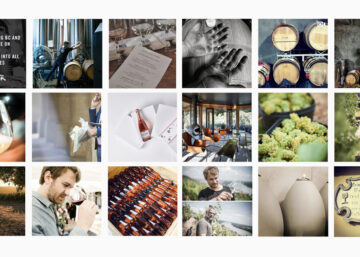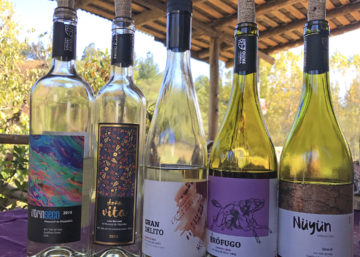And it’s official, my WSET Diploma studies are underway once more!
This week I began what will be the most intense, most difficult course of my wine life to date: D3 – Wines of the World. Spanning over nine months with weekly in-class hours, study-group sessions, and a ton of self-study, this course is going to be a beast!
Because I retain knowledge best when writing it down, I have decided to do a weekly recap here on the blog. We shall call it the #DIPWSETJOURNEY series. I see #DIPWSETTHOUGHTS popping up from time to time as well.
I must admit, I’m a bit uneasy about this journey. Beyond the intensity/difficulty, it has to do with my recent Kendall-Jackson kerfuffle, where I’m really questioning the merit of methodical tasting, of being a part of the system.
If taste is subjective, why am I spending thousands of dollars and countless hours of study to be objective? I never felt this way before the Diploma program. I did Levels 2 and 3 in Chile and was so young in my wine career that it was pure pleasure. But now, living in NYC and having access to all the juice, I’m realizing just how in-the-box the WSET is. And I’m the kind of wino that doesn’t need a box because I have a reusable 6-bottle bag that I fill however I fancy.
None of my “Kendal wines,” as one friend calls them, will be considered on this journey, rather wines with a pedigree that are easily sourced. Soul seems to matter less.
But why spend more time doubting a paid-in-full decision?
This much I know to be true: I am in for quite the ride. And I am excited to apply this experience to my career as a creator for the wine industry. The networking opportunities are also a big plus. I have new wino friends!
An Intro to Bordeaux
We begin with Bordeaux, France, home to the world’s greatest concentration of “fine wines.” Famous for its Cabernet Sauvignon or Merlot dominant blends, Bordeaux is perhaps the most recognized wine region in all the land.
My personal experience with Bordeaux has been a bumpy ride, and not because of its gorgeous gravely soils. It’s quite simple, the region has been beefed up and exploited to the point of producing a lot of disappointing wines for the price. Of course, I’ve also drunk amazingggg wines from the region, but that’s because I work in the industry and got to drink them “for free.” Add in the confusing classification systems based on estates and not the properties, and I’m completely turned off.
It’s the first chapter of the WSET D3 though, so here we go:
My biggest discovery has been a way to finally remember the difference between Right Bank and Left Bank. For years I simply could not get it through my thick skull which side did what better. Alas: C and L come first in the alphabet, hence Cabernet Sauvignon and the Left Bank. M and R come after, hence Merlot and Right Bank. YOU’RE WELCOME!
But we’ll get into the reds next week. This week is all about whites.
Before that, a broad overview of Bordeaux’s terroir. Here we have a moderate maritime climate, meaning even rainfall and less diurnal temperature variation, a.k.a. no significant temperature differences between day and night. Major moderators include the Gironde estuary and Gulf Stream that keep things warmer, the forests along the coast that block the vines from salty winds and heavy rainfall, and the Atlantic that keeps things cool.
When everything goes right, we get wines that balance tannins, sugar and acidity quite beautifully. The true allure of Bordeaux. However, frost and particularly rain can be a problem, leading to the region’s marked vintage variation. Some years are great, some years suck.
Though not everywhere, the best soils in Bordeaux are gravely, which is good for drainage and heat retention. More importantly, is the treatment of these soils. I remember being at Chateau Leoville Poyferre, and winemaker, Isabelle Davin chanting “SOIL, SOIL, SOIL!” As of 2020, the Gironde area is France’s #1 region for certified organic or in-conversion hectares planted. The soils are alive and that will only benefit the future of their wines.
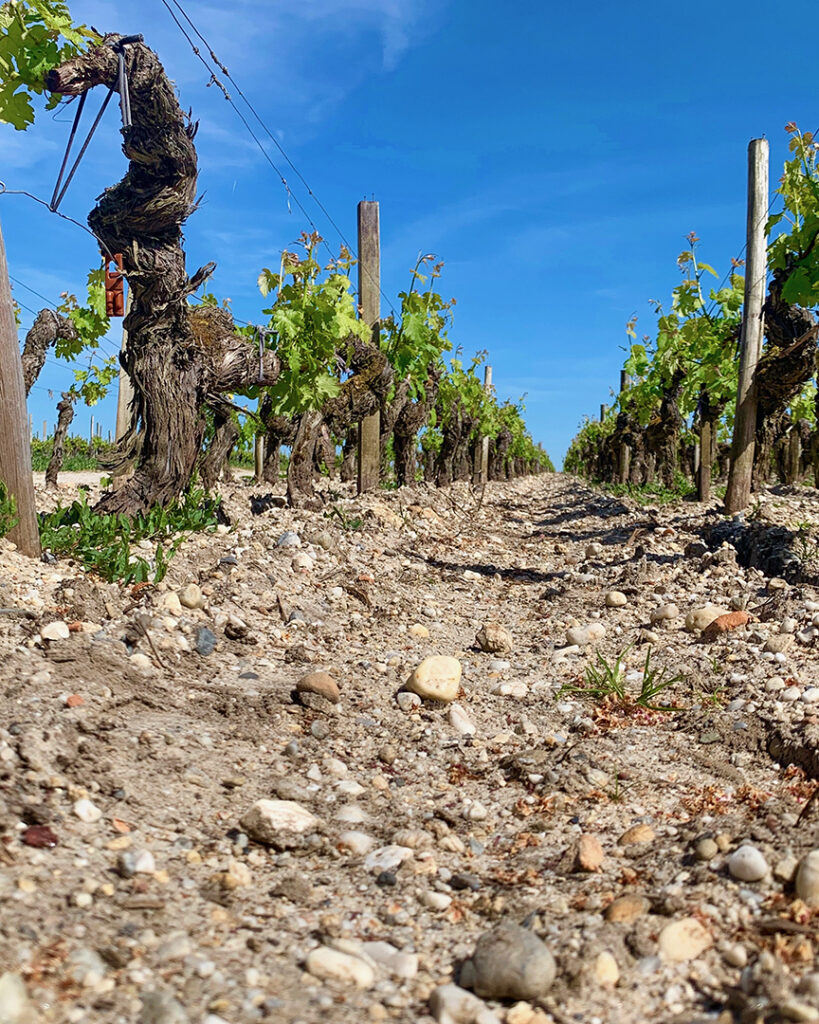 To the whites!
To the whites!
Bordeaux Whites
Representing a puny 8% of all production, Bordeaux whites are an afterthought. But they shouldn’t be. There are some great sips considering the price! If fresh, crisp Sauvignon Blanc for around $15 is your jam, go, baby, go. And of course, it’s hard to beat a Sauternes with botrytis.
Bordeaux whites work with three main grapes: Sauvignon Blanc, Sémillon and Muscadelle. The wines are often a blend, though mono varietals, Sauvignon Blanc, in particular, are starting to become a thing.
Sauvignon Blanc is going to give that high-kicking acidity with intense aromatics of citrus and herbs. Sémillon will round things out by providing body and complex flavors. Muscadelle is sometimes thrown in the mix to add on to body and fruitiness. There is also the increasingly popular Sauvignon Gris, a darker mutant of Sauvignon Blanc that can add smoky nuance.
It is widely accepted that Graves and Pessac-Léognan produce the best whites in Bordeaux and based on my experience, I would have to agree. Bordeaux AOC can be from anywhere and is allowed to produce single-variety wines. Entre Deux Mers must be a blend of at least two grapes.
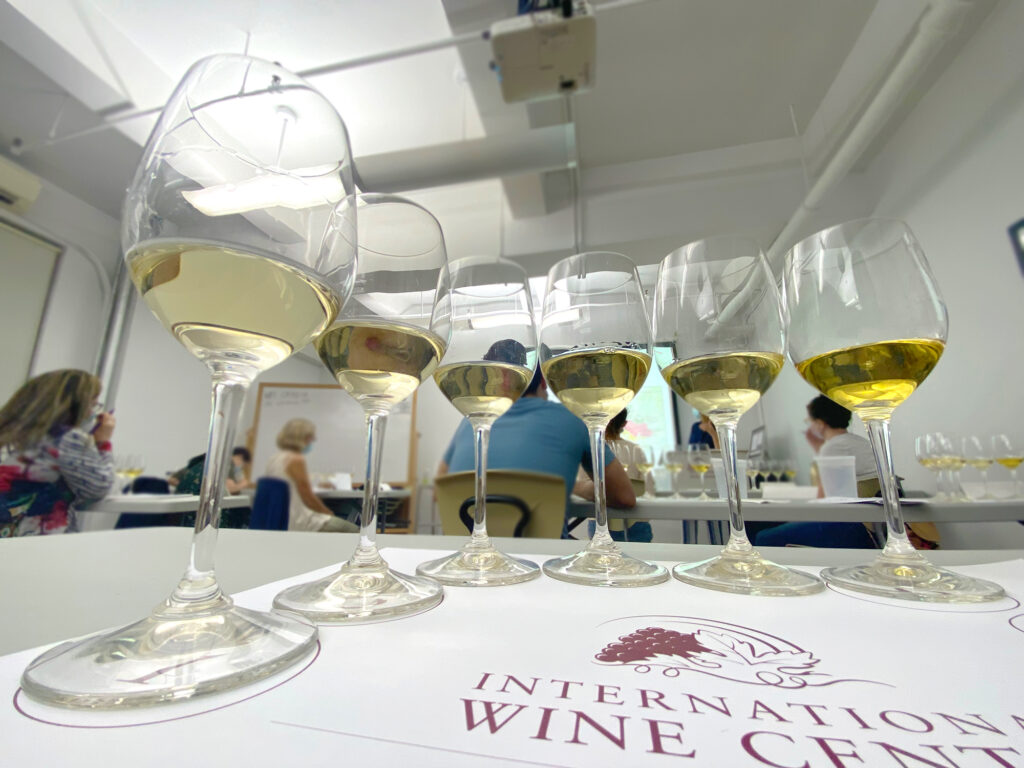
Of the seven tasted in class, three stuck out. A great bang for your buck Sauvignon Blanc that hit all the spots for enjoying a crisp white without having to think much. A beautiful layered blend from Pessac-Léognan. And an opulent, luscious Sauternes.
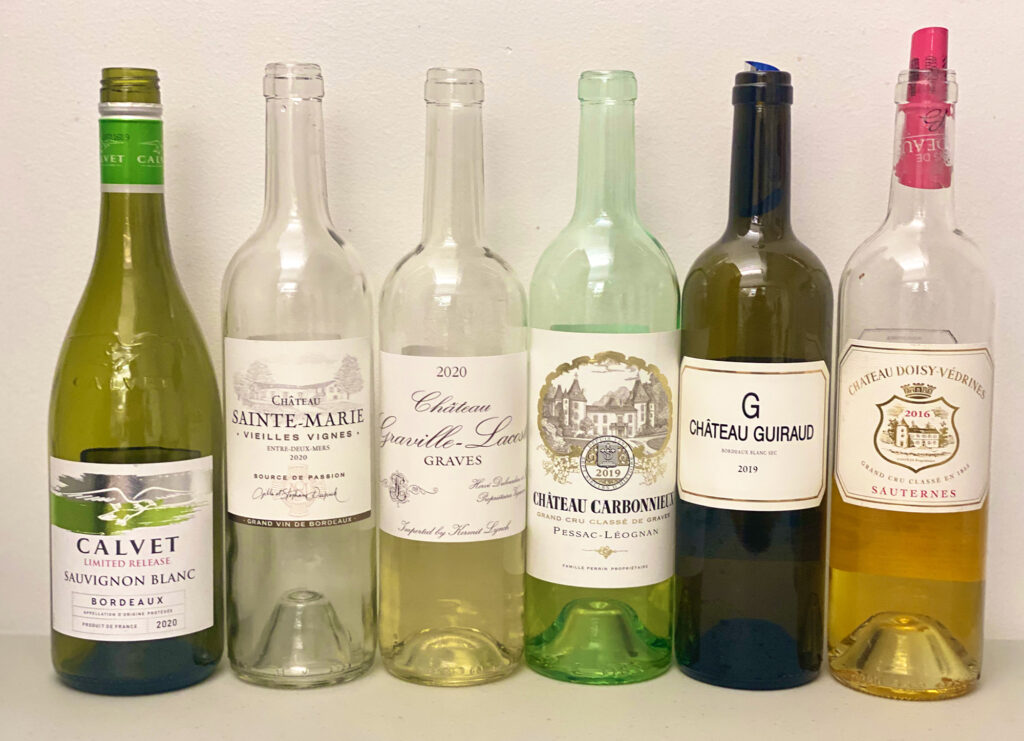
And the Winner Is: #4
As I’m supposed to practice writing in WSET fashion, here we go:
A medium lemon coloring with pronounced intensity in the nose, shooting out aromas of apple, baked pear, creamy lees, Mayer lemon, a peach pit, white flowers and bananas with wet stone minerality.
The mouth is dry with medium + acidity, medium alcohol, medium + body and medium + intensity. Rich flavors of lemon, sweet oranges, stones, white flower petals, star fruit and a hint of cream with vanilla and baking spices. A beautiful wine with a mouth-filling medium + finish.
Complex and balanced, this is a very good wine. The fruit intensity and acidity combine to create a ripe, rich experience that when added to its subtle oak integration and pleasant finish, makes my palate happy. Though quite beautiful, it lacks further complexity and length to be of outstanding quality. However, perhaps that could change in a few years, as this wine definitely has enough fruit intensity and acidity to be suitable for aging. I will be sure to revisit!
So there you have it.
One of my least favorite wines was dubbed by half the class as very good to outstanding, but I simply do not agree. I found it restrained and aggressively acidic. Time in glass did pull it out of its funk a bit, but I stick to my “good” assessment.
TASTING
Some things I noted to consider in future tastings:
Aging Potential – think of style and intention. A crisp Sauvignon Blanc is meant for now, it’s best now, so even though there is acidity and fruit, it is not suitable for aging, because it will not benefit from the years.
Quality – You must consider all the aromas and flavors. If the wine is all primary aromas and flavors, it’s most likely a good wine and nothing more.
Notes in general – think more in the clusters and flesh out the details to create a true assessment. Ok, it’s apple, but what kind?
BLIC – Balance, Length, Intensity, Complexity. The four factors of quality.
So yea, all of that is to be applied and considered in about 10-12 minutes of a blind tasting. Sure…
CHEERS! Please add any comments you have on Bordeaux whites below!
